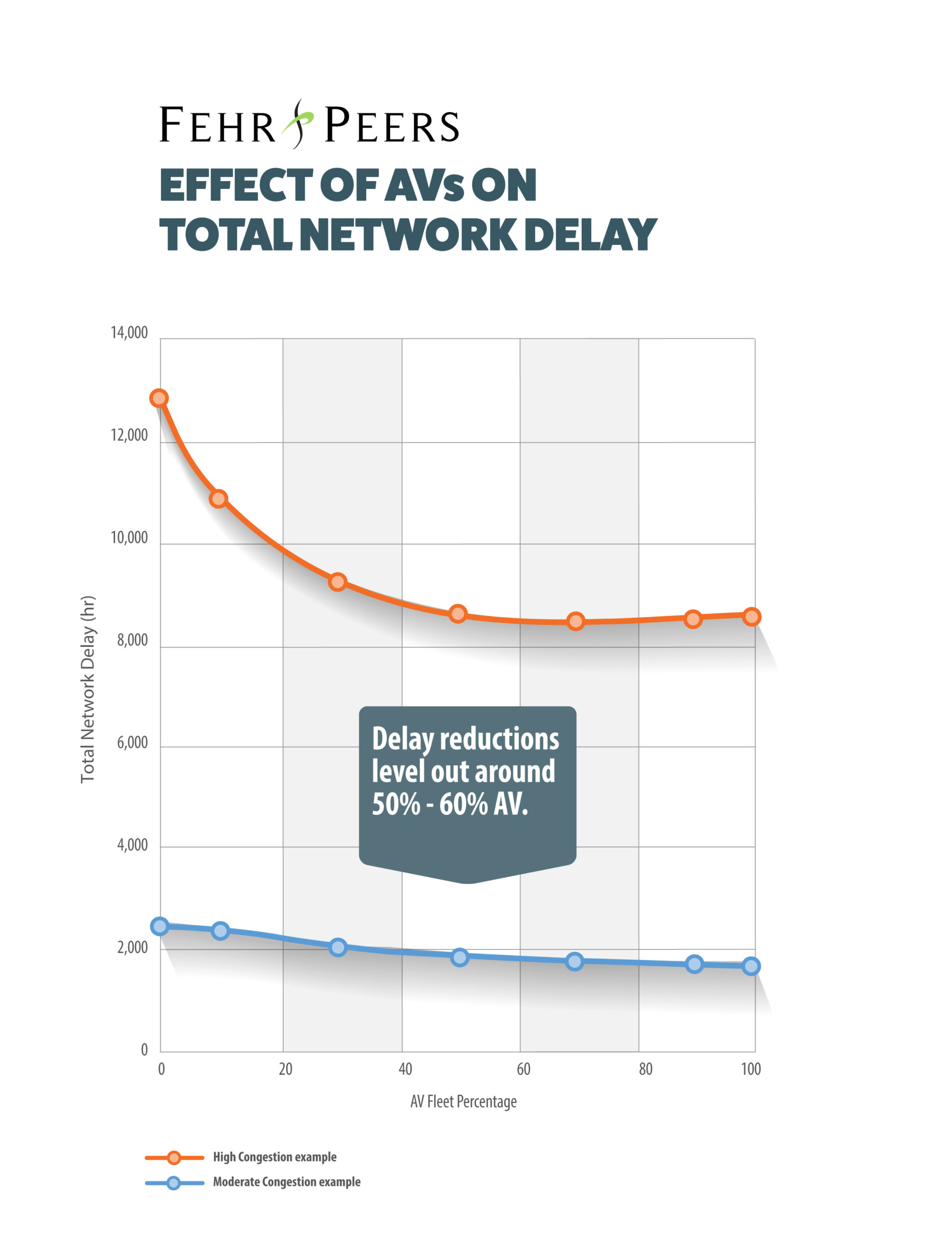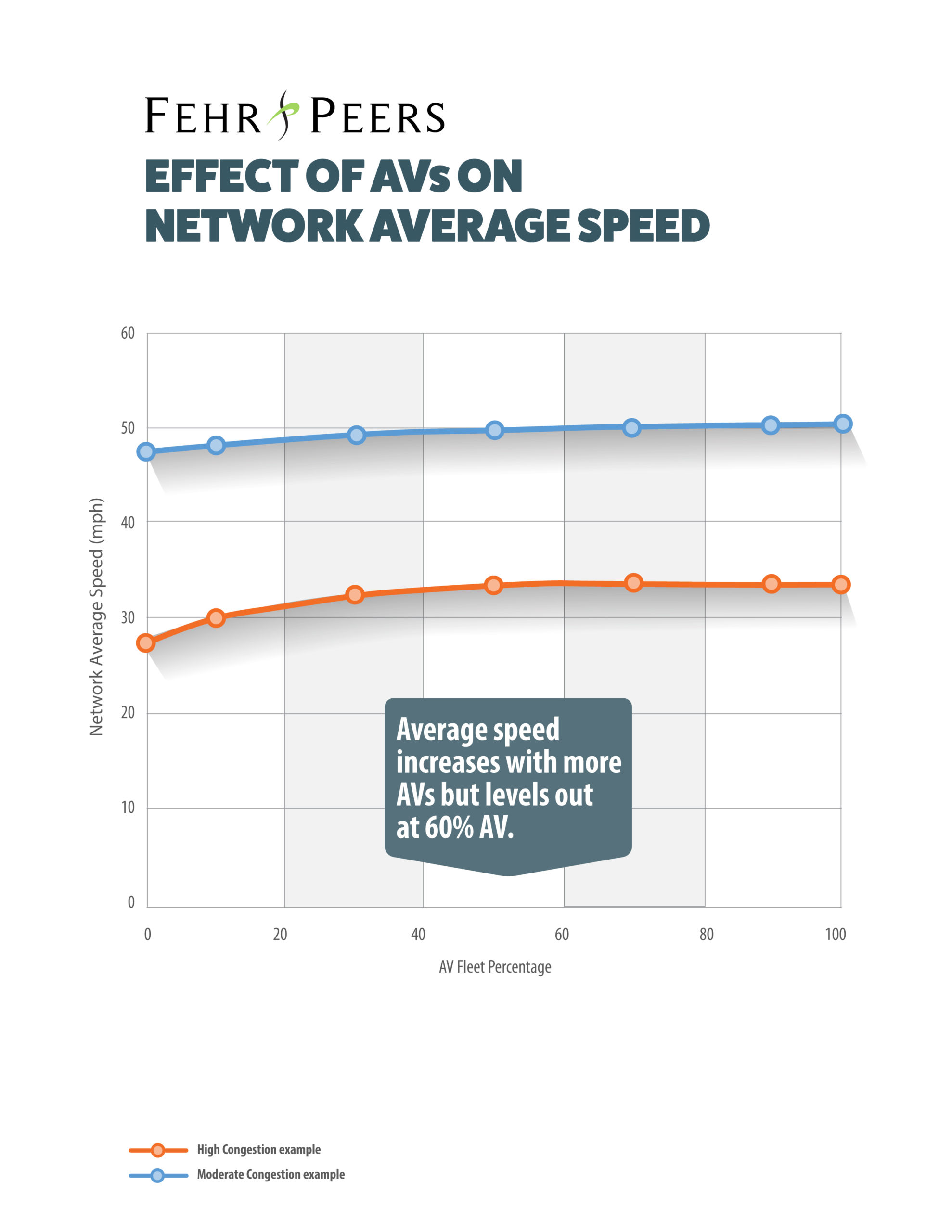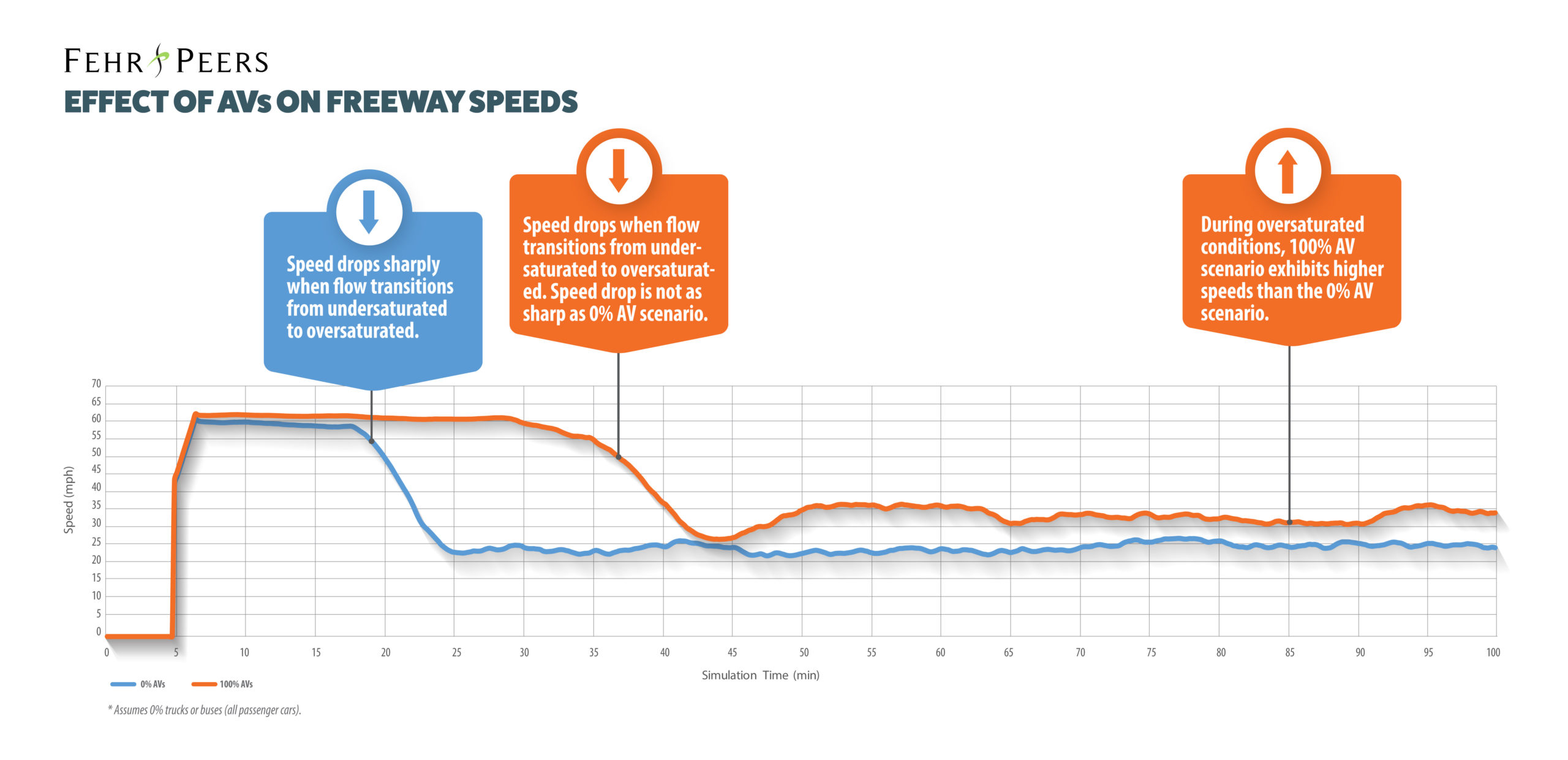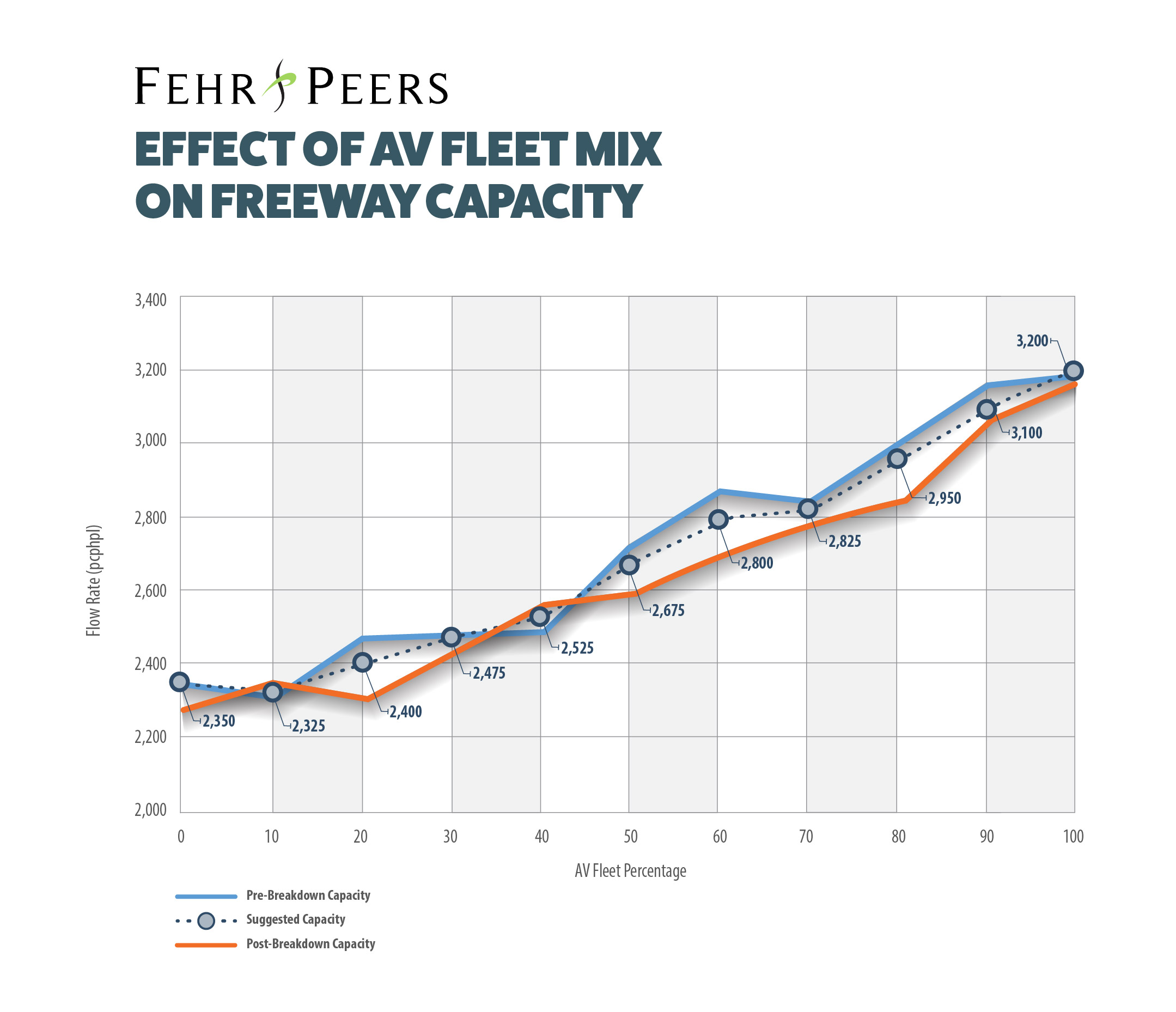Assessing the Effects of Autonomous Vehicles on Freeway Operations
Many assume that one of the benefits of AVs will be increased vehicular capacity and reduced delay on freeways. Fehr & Peers conducted our own research to test that hypothesis using traffic simulation models of varying conditions of congestion levels and AV fleet mix.
The blue vehicles in the video above are a representation of what we modeled, i.e. AVs being introduced into freeway traffic, mixed with human drivers.
Effects on Network Performance
AVs were added to two study networks composed of freeways, interchanges, and arterial intersections. As shown below, AVs are expected to reduce network delay and improve network speeds due to reduced headways and more responsive vehicle operation, with more benefits under highly-congested conditions. The improvement in vehicle operations increases through 30% AVs and then tends to max out around 60% AVs. At that point, the intersection capacity begins to control the overall network performance such that further improvements to freeway operations are constrained by arterial operations.
If you’d like to see more technical details, take a look at our findings on change in delay vs AV fleet and change in speed vs AV fleet.
Effects on Freeway Capacity & Speed
Freeway capacity under ideal conditions increases from about 2,350 passenger cars per hour per lane (pcphpl) with 0% AVs to about 3,200 pcphpl with 100% AVs, with some natural variations between pre-breakdown and post-breakdown conditions.
Effect of AV Percentage on Freeway Capacity
The relationship between % AVs and increased capacity is relatively linear, but does vary at certain levels. Such variations may ultimately prove accurate, or may just be due to randomness in the modeling. The graph also displays our suggested capacity values at each level of AV fleet mix absorption.
Model Parameters: Our traffic operations modeling work utilized the traffic simulation software, Vissim by PTV Group, which included AV options. We examined the vendor’s recommendations and applied our own combinations of car following, lane changing and lane assignments based on current research. More information available — contact us below to learn more.
Conclusions
Considerations
AVs improve network performance, owing to reduced headways and more predictable, measured reactions to adjacent vehicles. Those benefits max out once the fleet mix reaches 50%-60% AVs.
AVs will very likely impact freeway operations and should therefore be considered in operational analyses that have a long-range time horizon.
AVs increase the ideal capacity of a freeway lane, with more benefits accruing as more AVs enter the fleet mix. See the chart above for suggested capacities at each AV%.
The analysis should also consider the likely changes in travel demand (including induced travel) associated with AVs. Please refer to our webpage on AV travel demand for more insight.
Rosa Parks Diversity Leadership Award
While AVs do not prevent the eventual breakdown of traffic flow, they do enable somewhat better operations and increased throughput after breakdown occurs.
Analysis details should be refined over time as more data on AV operating characteristics becomes available.
Learn more by contacting one of our industry experts.
Quick Links
© 2017 – 2024 Fehr & Peers. All rights reserved.






